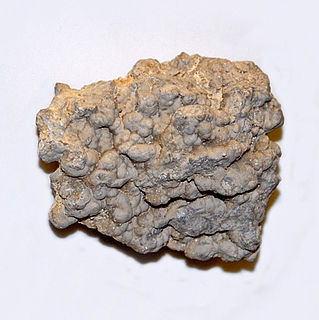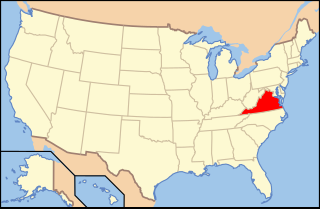
A reef is a shoal of rock, coral or similar material, lying beneath the surface of water. Many reefs result from natural, abiotic processes—deposition of sand, wave erosion planing down rock outcrops, etc.—but the best known reefs are the coral reefs of tropical waters developed through biotic processes dominated by corals and coralline algae.

Coralline algae are red algae in the order Corallinales. They are characterized by a thallus that is hard because of calcareous deposits contained within the cell walls. The colors of these algae are most typically pink, or some other shade of red, but some species can be purple, yellow, blue, white, or gray-green. Coralline algae play an important role in the ecology of coral reefs. Sea urchins, parrot fish, and limpets and chitons feed on coralline algae. In the temperate Mediterranean Sea, coralline algae are the main builders of a typical algal reef, the Coralligène ("coralligenous"). Many are typically encrusting and rock-like, found in marine waters all over the world. Only one species lives in freshwater. Unattached specimens may form relatively smooth compact balls to warty or fruticose thalli.
The geology of Tennessee is as diverse as its landscapes. Politically, Tennessee is broken up into three Grand Divisions: East, Middle, and West Tennessee. Physically, Tennessee is also separated into three main types of landforms: river valley plain, highlands and basins, and mountains.
Graticula, formerly incorrectly named Craticula, is a genus of Palaeozoic coralline alga. They form the framework of reef rocks in the Silurian of Gotland, from the Högklint, Slite and Halla groups.

The extinct Solenoporaceae have traditionally been interpreted as a group of red algae ancestral to the Corallinales.
The Sporolithaceae are one of the two extant families of coralline algae. They are differentiated from the other family, the Corallinaceae, by their formation of conceptacles with one or many pores.
Archaeolithophyllum is a genus of conceptacle-bearing red alga that falls in the coralline stem group. It somewhat resembles Lithophyllum.
Arenigiphyllum is a genus of alga from the Ordovician that falls in the coralline stem group. Only its vegetative anatomy is known.
Petrophyton is a genus of alga that falls in the coralline stem group.
Halysis is a genus of red alga thought to fall in the coralline stem group. It has only been recovered in thin sections, and thus is only known in two dimensions; however, an interpretation as a sheet of cells rather than a sheet of tubes or a single row of cells is the most plausible.
Neoprincipia is interpreted as the earliest crown-group red algae.
Hortonella is a genus of alga that has been placed deep in the coralline stem group on the basis of its scarcely differentiated thallus.
Principia is a genus of alga that has been placed in the coralline stem group on the basis of its slightly differentiated thallus; it forms an "intermediate" between Hortonella, Neoprincipia and Archaeolithophyllum.

Galaxaura is a genus of thalloid red algae. Dichotomous branches are formed; the medulla has a filamentous construction. It may be related to the fossil Gymnocodiaceae.
Palaeoaplysina is a genus of tabular, calcified fossils that are a component of many Late Palaeozoic reefs. The fossil acted as a baffle to trap sediment. Historically interpreted as a sponge or hydrozoan, recent studies are converging to its classification in the coralline stem group, placing it among the red algae.

Paleontology in Illinois refers to paleontological research occurring within or conducted by people from the U.S. state of Illinois. Scientists have found that Illinois was covered by a sea during the Paleozoic Era. Over time this sea was inhabited by animals including brachiopods, clams, corals, crinoids, sea snails, sponges, and trilobites.

Paleontology in Virginia refers to paleontological research occurring within or conducted by people from the U.S. state of Virginia. The geologic column in Virginia spans from the Cambrian to the Quaternary. During the early part of the Paleozoic, Virginia was covered by a warm shallow sea. This sea would come to be inhabited by creatures like brachiopods, bryozoans, corals, and nautiloids. The state was briefly out of the sea during the Ordovician, but by the Silurian it was once again submerged. During this second period of inundation the state was home to brachiopods, trilobites and entire reef systems. During the mid-to-late Carboniferous the state gradually became a swampy environment.

Paleontology in Missouri refers to paleontological research occurring within or conducted by people from the U.S. state of Missouri. The geologic column of Missouri spans all of geologic history from the Precambrian to present with the exception of the Permian, Triassic, and Jurassic. Brachiopods are probably the most common fossils in Missouri.
The geology of Ohio formed beginning more than one billion years ago in the Proterozoic eon of the Precambrian. The igneous and metamorphic crystalline basement rock is poorly understood except through deep boreholes and does not outcrop at the surface. The basement rock is divided between the Grenville Province and Superior Province. When the Grenville Province crust collided with Proto-North America, it launched the Grenville orogeny, a major mountain building event. The Grenville mountains eroded, filling in rift basins and Ohio was flooded and periodically exposed as dry land throughout the Paleozoic. In addition to marine carbonates such as limestone and dolomite, large deposits of shale and sandstone formed as subsequent mountain building events such as the Taconic orogeny and Acadian orogeny led to additional sediment deposition. Ohio transitioned to dryland conditions in the Pennsylvanian, forming large coal swamps and the region has been dryland ever since. Until the Pleistocene glaciations erased these features, the landscape was cut with deep stream valleys, which scoured away hundreds of meters of rock leaving little trace of geologic history in the Mesozoic and Cenozoic.






